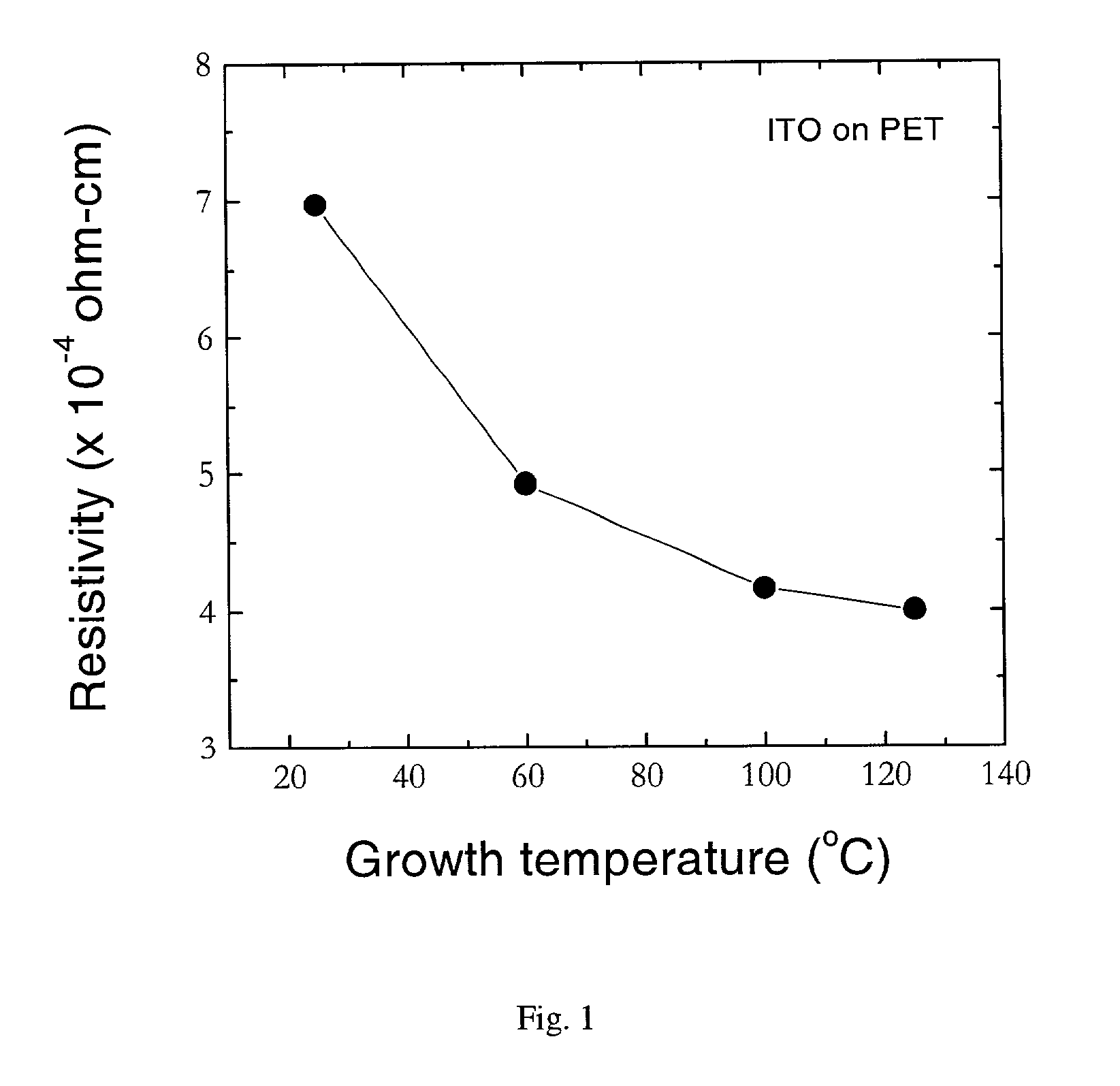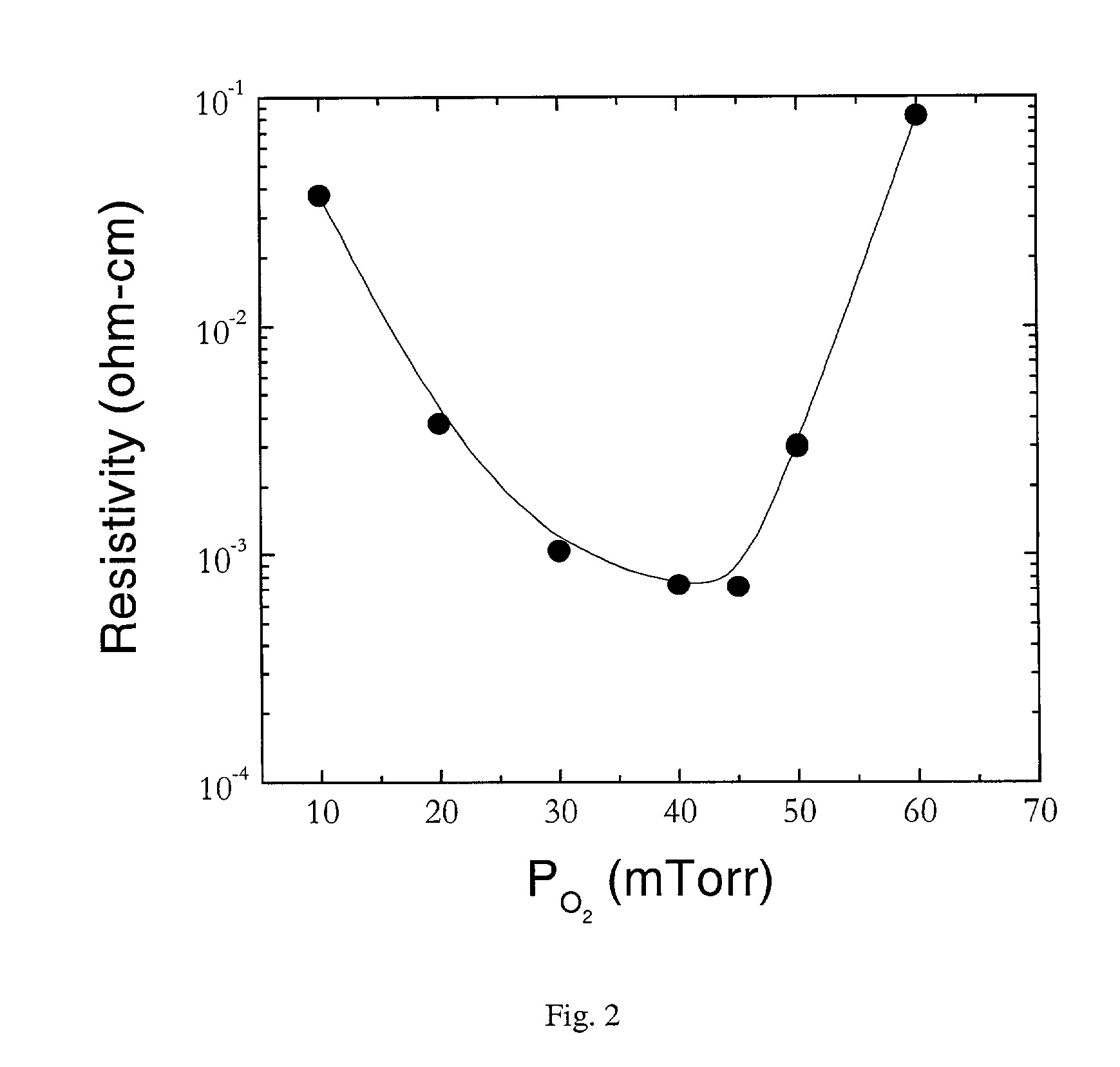Pulsed laser deposition of transparent conducting thin films on flexible substrates
a technology of conducting thin films and flexible substrates, which is applied in the direction of photovoltaic energy generation, electrical equipment, semiconductor devices, etc., can solve the problems of damage to the surface of both the substrate and the film, and the sputtering technique cannot be used to grow the electrode film, etc., to achieve a smooth surface, lower electrical resistivity, and high optical transparency
- Summary
- Abstract
- Description
- Claims
- Application Information
AI Technical Summary
Benefits of technology
Problems solved by technology
Method used
Image
Examples
example 2
[0031] OLEDs were constructed using the transparent conducting films deposited by pulsed laser deposition.
[0032] ITO thin films, deposited by PLD on PET substrates, were used as anode contacts in organic light-emitting diodes (OLEDs). The performance of the device was measured. FIG. 7(a) shows the OLED device configuration and FIG. 7(b) shows the chemical structures of the organic materials used in this research. The device structure consists of a hole transport layer (HTL) 10, of N, N'-diphenyl-N, N-bis (3-methylphenyl)1,1'-diphenyl-4,4'di-amine (TPD), 50, and an electron transport / emitting layer (ETL(EML) 20, of tris (8-hydroxyquinolinolato) aluminum (III) (Alq3), 60. The cathode contact 30, deposited on top of the ETL 20, is an alloy of Mg:Ag (ratio=12:1 by weight). Devices were fabricated by high vacuum vapor deposition, with a background pressure of 1.times.10.sup.-7 Torr. ITO coated substrates 40, were cleaned by an oxygen plasma asher. After the deposition of the organic laye...
PUM
 Login to View More
Login to View More Abstract
Description
Claims
Application Information
 Login to View More
Login to View More - R&D
- Intellectual Property
- Life Sciences
- Materials
- Tech Scout
- Unparalleled Data Quality
- Higher Quality Content
- 60% Fewer Hallucinations
Browse by: Latest US Patents, China's latest patents, Technical Efficacy Thesaurus, Application Domain, Technology Topic, Popular Technical Reports.
© 2025 PatSnap. All rights reserved.Legal|Privacy policy|Modern Slavery Act Transparency Statement|Sitemap|About US| Contact US: help@patsnap.com



